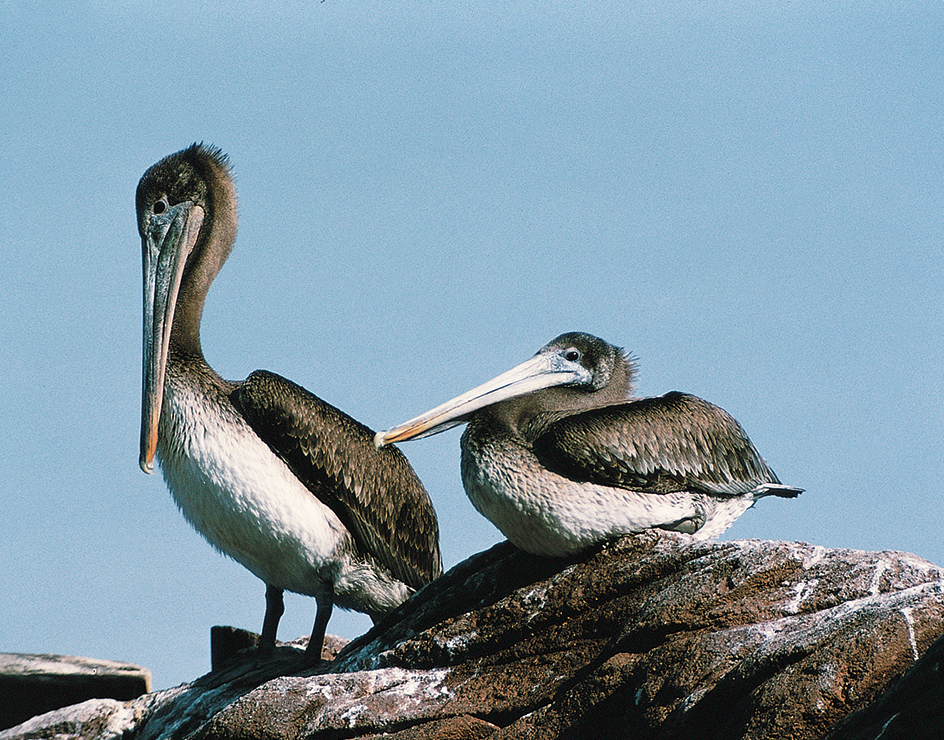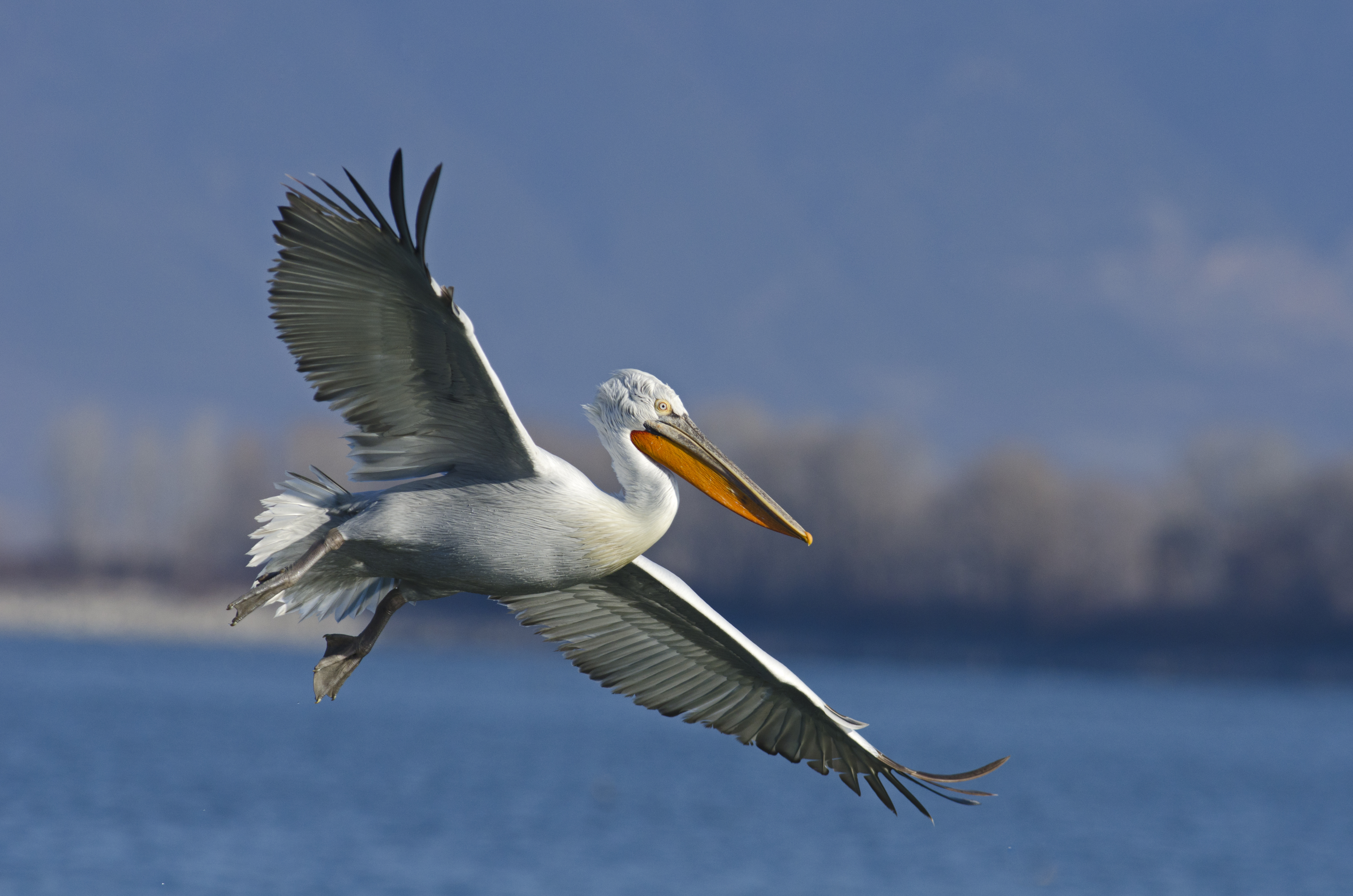Pelican, << PEHL uh kuhn, >> is a large bird that lives near water. Pelicans have a long, straight bill with a flexible pouch made of skin on the underside. They use the pouch to catch fish, their chief food. Pelicans also eat other animals, such as salamanders and frog tadpoles. The birds have webbed feet and can swim well. They also are skilled fliers, but they are clumsy on land.
Loading the player...Pelicans
Kinds.
There are seven species of pelicans. Five have white feathers with some black on the wings. Of the remaining two kinds, one is gray and white, and the other is brown. The brown species, or brown pelican, inhabits coasts of North and South America. The six other species live along rivers and near freshwater lakes in North America, Europe, Africa, Asia, and Australia. They include the American white pelican and Australian pelican.

The American white pelican weighs about 16 pounds (7 kilograms) and is about 5 feet (1.5 meters) long. It has a wingspread of up to 10 feet (3 meters). The bird nests in western and central North America. It migrates in the fall as far south as Mexico and Central America.
The Australian pelican, the largest pelican species, grows to about 6 feet (1.8 meters) long and weighs up to 34 pounds (15 kilograms). Its wingspread reaches more than 8 feet (2.4 meters). This pelican lives throughout Australia.
The brown pelican lives as far north as North Carolina and British Columbia. It ranks as the smallest species of pelican. It measures about 4 feet (1.2 meters) long and has a wingspread of about 7 feet (2 meters).
Habits.
American white pelicans often fish in groups. They swim along the top of the water in a line, driving the fish ahead of them. After the fish have been chased into shallow water, the pelicans scoop up the catch with their pouches. The brown pelican flies until it spots a fish near the surface of the water. Then it dives into the water to catch the fish.
Pelicans are almost always seen in flocks. While flying, American white pelicans may gather in flocks of up to 1,000 birds. These birds may soar upward in tight circles on a rising current of hot air called a thermal. They often soar so high that they disappear from sight.

Pelicans nest in large colonies (groups). Some pelicans nest in trees. They build their nests out of twigs and other plant materials. Other pelicans nest in small hollows on the ground, usually on islands. Female pelicans lay two or three chalky-white eggs, which hatch in about a month. Pelicans are born without feathers. They cannot fly until they are about 10 to 12 weeks old.
Pelicans and people.
Housing and commercial developments have endangered pelicans in many parts of the world. Such developments often pollute the pelicans’ feeding grounds and destroy their nesting sites. Two of the most endangered pelican species, the Dalmatian pelican of Europe and Asia and the spot-billed pelican of south and southeast Asia, have seen much of their natural habitat destroyed by human development. 
People have also reduced pelican populations because they have seen the birds as a threat. For example, American white pelicans were killed because fishing enthusiasts believed the birds ate game fish. Studies of white pelicans, however, have proved this belief to be false.
Over the years, people have worked to conserve pelicans in many ways. In 1903, United States President Theodore Roosevelt set up the first U.S. national wildlife refuge—Pelican Island, in Florida—to protect nesting sites of brown pelicans. Today, many nations have laws protecting pelicans and their habitats.
See also Booby; Cormorant; Frigatebird; Guano.
